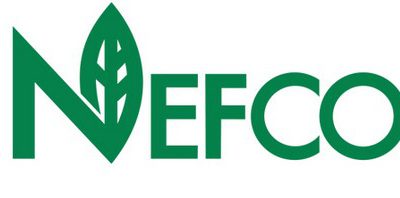This project is focused at the analysis of the biomass logistics concepts and value chains from feedstock supply to final utilisation. Among other things the project studied utilisation value chains for four biomass-to-energy cases in Ukraine and compared them with similar four cases in Finland. Identification of corresponding cases in Ukraine and Finland was done in close cooperation with State Agency of Energy Efficiency of Ukraine, NEFCO and Finnish stakeholders. Two solid biomass and two biogas plants were chosen in Ukraine:
- Biomass CHP of public utility Miskteplovodenergia in Kamyanets-Podilskyi, Khmelnitsky region, 15MWth
- Slavutych Boiler plant in Kyiv oblast, 10MW HOB based on wood chips
- Biogas plant of Gals-Agro holding in Varvinsk rayon, Chernihiv region, 1.2 MWe.
- Biogas plant of Rokytne sugar plant Ltd. in Rokytne, Kyiv region, 2.4 MWe.
Particular attention was paid to:
- current biofuel use chains for each installation;
- organization of collecting, storage, delivering, temporary keeping and transportation of raw materials;
- organization for the production chain of fuel from agro and wood raw materials;
- system of monitoring of quantity and quality of raw materials;
- organization of the raw materials use for the production of thermal and electrical energy.
The value chain steps with most important gap impacts for solid biomass are identified as follow:
- The lack and high cost of special equipment for burning of wet fuel and bark;
- The lack of special high productivity equipment for chipping wood residues to provide large quantities of raw materials for powerful energy objects;
- High price of wood chips from firewood, as a result produced thermal energy can be not competitive with traditional fuels (natural gas);
- High level of state regulation of heat and electric energy production and limited level of projects profitability;
- Problems with grid connection, seasonal consumption of thermal energy, the lack of clear state policy and support for waste and renewable energy consumption.
Wood harvesting issues are particularly important among the barriers that hinder biofuel market development, namely:
- Complicated access of private companies to logging residues that are an important potential source for wood fuel production (wood chips);
- Absence of record keeping for the logging residues;
- No plans and targets for the state forest enterprises for wood fuel harvesting agreed with the National Renewable Energy Action Plan until 2020 and the Energy Strategy of Ukraine until 2035;
- The lack of specialized machinery for forestry operations including those related to harvesting of wood fuel;
- The lack of forest roads that hampers access to forest resources.
The value chain steps with most important gap impacts for biogas are:
- Problems with DH connection as soon as heat from biogas is no competitive with heat from natural gas;
- Low efficiency of energy conversion for power, thermal energy losses;
- The lack of experience in particular with lignocellulosic materials (straw), underdeveloped biofuel market;
- The lack of supplier guaranties, complicated procedure of project development;
- The lack of certification for organic fertilizer and farming, lack of machinery for digestate application.
Among key policy gaps and barriers for bioenergy development in Ukraine next ones were identified:
- Underdeveloped biofuel/biomass market, short-terms contracts for fuel/raw materials supply;
- Low attractiveness of biomass/biogas projects due to low tariffs, high discount rates, discriminatory third-party access to heat networks, etc.);
- Complicated procedure of project development in parallel with high degree of institutional challenges;
- Complicated access to biomass of forest origin;
- Practical problems and lack of experience to use agricultural biomass as fuel or raw materials;
- Underdeveloped organic farming and digestate application;
- The lack of support for biomethane, the lack of legislation for biomethane production and use support, for example, biomethane based motor fuel no competitive with natural gas price.
Roadmap for biomass-to energy market growth was developed. Main part of the Roadmap is dedicated to possible ways for overcoming technical and non-technical barriers that hamper the biomass-to-energy market growth in Ukraine. The document summarizes the identified main policy gaps and barriers reflecting their primary causes and parties concerned. The barriers are grouped into general ones for the bioenergy sector as a whole, and specific barriers for certain types of biomass such as wood, agricultural biomass and biogas.
Starting from the departing point of 2020, the Roadmap shows some steps to achieving the consumption of biofuels for energy at the amount of 23 Mtoe/yr by 2050.
The Roadmap also suggests recommendations and actions for elimination of the barriers and creation of favourable conditions for bioenergy development in the country. The actions suggested comprise quite wide range of activities including amending of the current legislation, development of new relevant strategies or revision of some existing ones, working-off of respective technologies, holding dedicated seminars and trainings and some other important activities.
Another part of the Roadmap represents a general forecast for the development of bioenergy sector in Ukraine until 2050 based on the scenario of reaching 70-100% renewables in the total primary energy supply by 2050. This part of the document outlines the amount and structure of biomass resources as well as finances required for implementing this scenario. General trends during the period of 2020-2050 are assumed to be:
- Increasing share of agricultural residues and energy crops in the consumption of biomass for energy: up to 59% and 20% of the total amount of solid biofuels in 2050, respectively;
- Minimal rise in the consumption of woody biomass for energy by factor 1.2 in comparison with factor 7.9 rise in the consumption of agro-residues;
- Considerable rise in the production of biogas and liquid biofuels up to 4.7 Mtoe/yr and
3.4 Mtoe/yr by 2050, respectively; - Launched production of advanced transportation fuels and biomethane.
